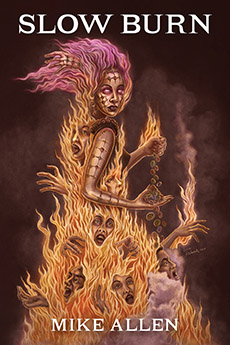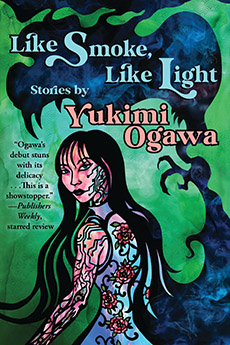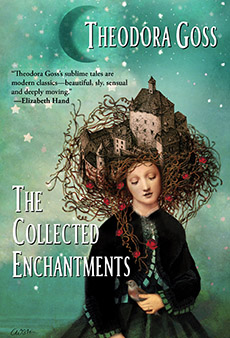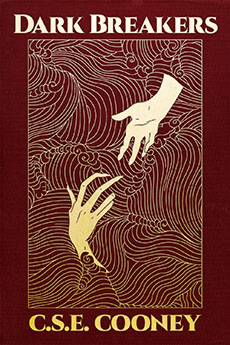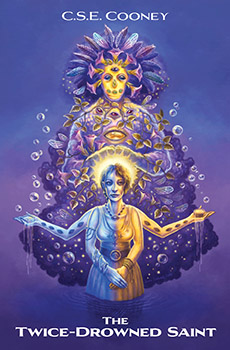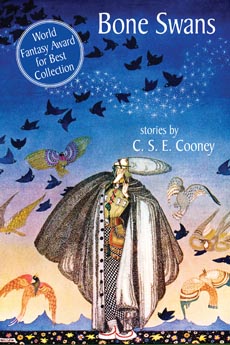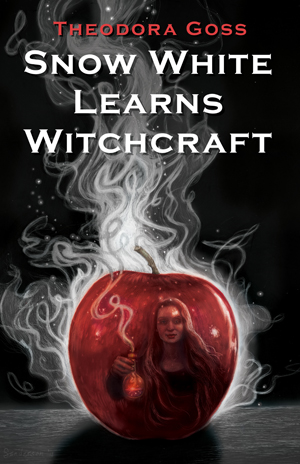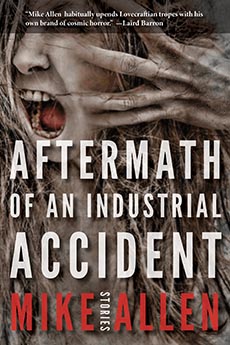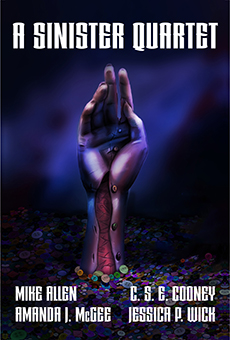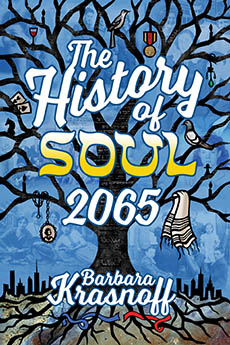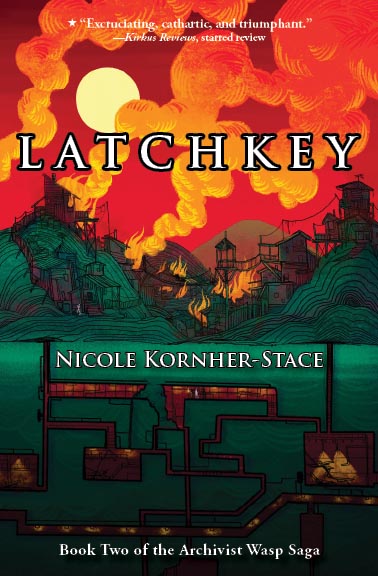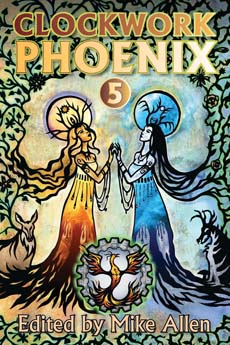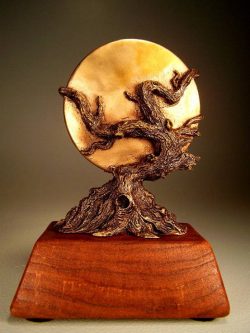CLOCKWORK PHOENIX 2: more tales of beauty and strangeness
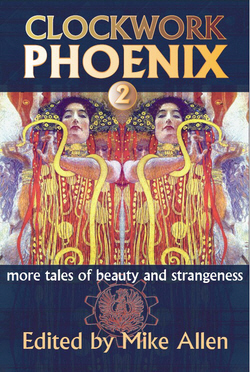
|
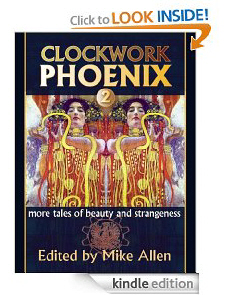
|
|
Order now AMAZON AMAZON UK AMAZON DE AMAZON FR WEIGHTLESS BOOKS NOOK ITUNES KOBO GOOGLE PLAY SCRIBD SMASHWORDS Buy the paperback Amazon Check out these links
Read Saladin Ahmed’s story “Hooves and the Hovel of Abdel Jameela”
See photos from the official CLOCKWORK PHOENIX 2 launch, |
Praise for CLOCKWORK PHOENIX 2 . . . .
Allen finds his groove for this second annual anthology of weird stories, selecting 16 wonderfully evocative, well-written tales. Marie Brennan’s thought-provoking “Once a Goddess” considers the fate of a goddess abruptly returned to mortality. Tanith Lee puts a stunning twist in the story of a morose prince in “The Pain of Glass.” Mary Robinette Kowal’s “At the Edge of Dying” describes a world where magic comes only to those at death’s door. In “Hooves and the Hovel of Abdel Jameela,” Saladin Ahmed tells of a small village on the edge of a desert, a hermit and a woman who may be a witch. Each story fits neatly alongside the next, and the diversity of topics, perspectives and authors makes this cosmopolitan anthology a winner.
In this anthology of 15 original tales by some of fantasy’s most imaginative voices, Tanith Lee returns to her remarkable Flat Earth setting for a poignant and cutting tale of love, fate, and misfortune in “The Pain of Glass.” Other contributors include veteran and newer writers Forrest Aguirre, Steve Rasnic Tem, Joanna Galbraith, Saladin Ahmed, and others, each chosen for their unique perspective and stylistic grace. VERDICT: This second volume in a new annual anthology series will appeal to fantasy readers who enjoy short stories.
CLOCKWORK PHOENIX is the most experimental and often the most interesting of the impressive stable of four anthologies published by Norilana. The second outing has a lot of strong work, including a nice ultra-romantic tale of a woman of glass by Tanith Lee (“The Pain of Glass”), a moving fairly traditional ghost story from Kelly Barnhill (“Open the Door and the Light Pours Through”), and a story I frankly didn’t think I’d like, but which seduced me, Gemma Files and Stephen J. Barringer’s “each thing i show you is a piece of my death,” about experimental film makers creating a sort of collage film, including what seems a very old clip of a man committing suicide. It’s queasy-making, odd, yet compelling. My favorite story is Ann Leckie’s “The Endangered Camp,” which she says resulted from a sort of challenge to combine dinosaurs, post-apocalyptic fiction, and Mars — and does so beautifully as the crew of the first spaceship to Mars witnesses the asteroid striking Earth and wonders what to do. |
. . . And more praise for CLOCKWORK PHOENIX 2 authors . . .
|
“A story about The Boy Who Speaks With Walls, The Girl Who Eats Fire, and The Kid Whose Laughter Makes Adults Run Away. Very moving, it presents a very real, raw rendering of the dynamics of childhood friendships through the surreal twists the children’s titles suggest.” (Amal El-Mohtar, SF Site)
“Nicely done … a post-apocalyptic story set in a ruined urban future.” (Gardner Dozois, Locus) “The deeply affecting story of a sixth son in a household where the seventh is most valued … It’s an excellent piece, beautifully voiced and crafted to lodge uncomfortably in your ribs.” (Amal El-Mohtar, SF Site)
“The story of Nefret, a woman who, after eleven years of being the vessel of the goddess Hathirekhmet, is sent home to be an ordinary woman among ordinary mortals, expected to live a life of submission and domesticity to which she has not been trained. This is a compelling exploration of womanhood and coming-of-age rituals, and I thoroughly enjoyed it. (Amal El-Mohtar, SF Site) “The well told, compelling and compassionate portrait of a girl formerly acting as a goddess’ avatar, trying to fit again in a normal life.” (Mario Guslandi, SF Site) “An introspective, character-driven story that touches upon Egyptian culture, as a young woman deals with having lost her status as an avatar for a goddess. The sentiments expressed by the end were very wise and beautiful, and I feel truly enriched for having read it!” (Sequential Tart)
“An enjoyable fairy tale for adults featuring minotaurs, angels and statues becoming live.” (Mario Guslandi, SF Site) “A compelling, bittersweet fantasy story of a statue brought to life while her ‘mate’ remains stone; she struggles in a hostile city under siege — with the help of a minotaur who worships her — hoping to find a way bring her mate to life. McHugh’s created a vivid, fascinating world here, and I really hope he revisits it!” (Sequential Tart)
Selected for The Year’s Best Science Fiction & Fantasy 2010 Edition edited by Rich Horton “Velociraptors set off on a heroic quest and are faced with a difficult choice that may decide whether their race survives or not.” (Gardner Dozois, Locus) “Picks up with a group of individuals also fleeing a dying world — except the world they’re fleeing is a prehistoric Earth, the land they’re seeking is Mars, and the individuals in question are dinosaurs. I kid you not. … It’s a wonderfully effective, well-wrought story that reminded me just a little of Jo Walton’s Tooth and Claw.” (Amal El-Mohtar, SF Site)
“It’s been my experience that there are two types of readers, one that prefers a story with a good concept or plot, while the other favors character and technique more. Kowal manages to satiate both types with this story and the excitement never peters off as each scene seems to escalate the conflict.” (Bibliophile Stalker) “Set in a Polynesian-flavoured world, Kahe is a sorcerer who works his greatest magic by having his wife, Mehahui, attempt to kill him; by nearing death’s door, the goddess Hia grants him the power to work his spells. But paying the price of his magic becomes harder and harder, since Kahe’s tribesmen are at war with the invading Ouvallese, and straddling the edge of death is a difficult thing to do in battle. Unexpected twists abound in this story, the surprising conclusion of which I loved on several levels.” (Amal El-Mohtar, SF Site) “A beautiful and quite original piece, full of pathos and very imaginative, developing the concept that being close to death enhances the strength of the spells thrown by sorcerers.” (Mario Guslandi, SF Site)
2009 Nebula Award finalist for Best Short Story Selected for Nebula Awards Showcase 2011 edited by Kevin J. Anderson “Takes us to a medieval Middle-East, where a young physician has been banished to a backwater village called Beit Zujaaj … he is summoned to the hovel of Abdel Jameela, a strange recluse who has lived alone with his never-seen wife for many years. As his wife is in need of a physician, the latter’s presence is requested, and the story rolls into the marvelous from there.” (Amal El-Mohtar, SF Site) “Explores what happens when one puts aside the prejudices of one’s religion while still embracing the loving and faithful aspects.” (Sequential Tart) |
Selected for the Locus Magazine 2009 Recommended Reading List “This piece begins with a powerful scene but the author’s talent soon becomes evident as we discover that the narrative isn’t told in chronological order. Our expectations are steered in a different but equally satisfying direction, and Lee manages to mesmerize readers with her attention to detail and beautiful language.” (Bibliophile Stalker) “Lee confirms her extraordinary talent as a storyteller in ‘The Pain of Glass,’ a perfect story where a bride-to-be becomes first sand and then glass in the shape of a delicate wine vessel. A veritable masterpiece.” (Mario Guslandi, SF Site)
“Write Syria into a story convincingly and you start the game with seven thousand bonus points. Write the story such that it reads like an oral tale, or a translation of Arabic material, and you earn seven thousand more … Although one of the simpler pieces, I was left rather charmed.” (Amal El-Mohtar, SF Site) “An adorable (albeit somewhat bittersweet) story about a magic fountain, the fish that live in it, and their caretaker. I could easily see this being made into a Pixar short!” (Sequential Tart)
“This story is a collection of origin myths and it’s due to Valente’s skill that they sound authentic rather than artificial. But beyond simply being faithful to tone and theme, the author also anchors these myths with an overarching narrative that’s uniquely Valente and very satisfying.” (Bibliophile Stalker) “Desperately beautiful, and the most surreally imaginative, accomplished, and original retelling of Snow White I’ve ever read. In the jewelled prose that is her trademark, Valente puts forward three theories on the origin of mirrors, threaded through and encompassed by a twisting of the fairy tale — and has them told by lesbian nuns. Again, I am not joking.” (Amal El-Mohtar, SF Site)
“A story about Tweedledum and Tweedledee in their old age. You don’t need to have read Through the Looking Glass to find a fascinating postmodern examination of life and death, but having read it certainly adds layers of nuance and depth. It’s beautifully, cleverly written, ably engages with its source material, and makes explicit some of the more disturbing implications of Carroll’s story.” (Amal El-Mohtar, SF Site)
2009 Shirley Jackson Award finalist for Best Novelette Shortlisted for the Washington Science Fiction Association 2010 Small Press Award for short fiction Selected for Best Horror of the Year 2 edited by Ellen Datlow Selected for the Locus Magazine 2009 Recommended Reading List “One of the most successfully ambitious, brilliant, and terrifying stories I’ve ever read. This is what I wish more horror was: fiction whose effect is a lingering awe, a reluctance to look through windows into the dark for fear of seeing a face, a rising thrill between sternum and chin as page after page is turned. Told through a collection of documents found in a case file, ‘each thing i show you is a piece of my death’ explains the phenomenon of Background Man, a completely naked man ‘wearing a red necklace’ who appears inexplicably in film after film where he is not expected to be … overwhelmingly excellent in its execution.” (Amal El-Mohtar, SF Site) “An exceedingly creepy piece … It reveals a ghost story through articles, emails, and police reports dealing with a pair of filmmakers and a snuff film they were sent via email. It freaked me out about as much as Ringu, which I consider to be the scariest film I’ve ever seen!” (Sequential Tart)
“This is a story fraught with vanishing, evanescence, the ephemeral: what begins as a correspondence between a married couple separated by the necessities of the Second World War slowly unravels into something quite different, by turns beautiful and frightening.” (Amal El-Mohtar, SF Site)
“This story is heart-breaking. I would caution anyone who has or has had a loved one suffer from Alzheimer’s to keep a warm soothing drink to hand, because it will lodge a lump in your throat and an ache in your chest that has nothing to do with sentimentality.” (Amal El-Mohtar, SF Site)
“Makes me want to write an essay about how perfect an editorial decision it was to place it at the very end, and what a fitting final scene it provides to the last act of the anthology. Tem’s story presents a dubious vision of almost-perfect normality in a happy family who have long lived in their house on the hill; the story begins when the parents announce to their now-adult children their decision to leave it and ‘live simply.’ It’s a self-effacing statement of a story that provides quietly disquieting closure to the whole.” (Amal El-Mohtar, SF Site) |

